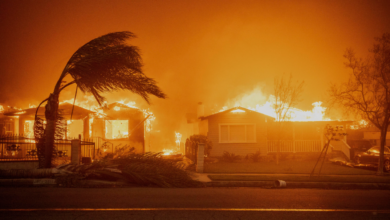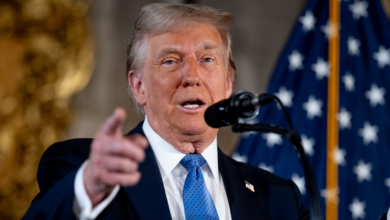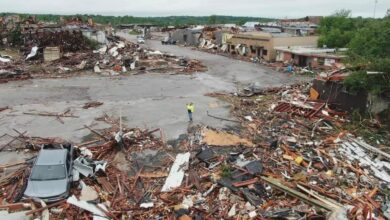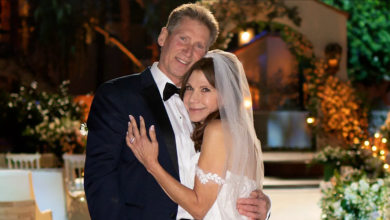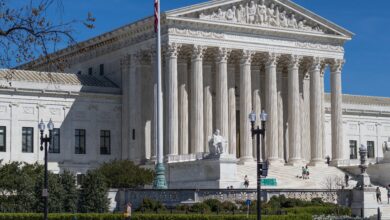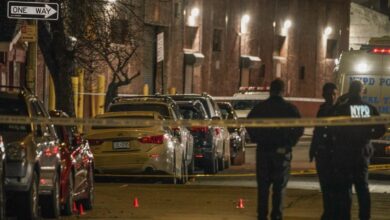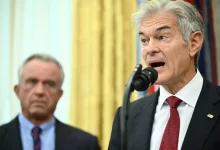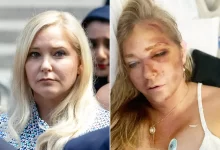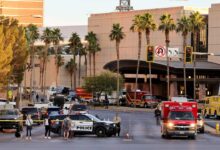No Kings’ Demonstrator Dies After Being Shot at Utah Protest, Police Say
Arthur Folasa Ah Loo died after a protest peacekeeper shot him during a Salt Lake City “No Kings” rally. Police arrested Arturo Gamboa, who reportedly pulled a rifle, sparking the shooting.

Utah (WE) — A 39-year-old demonstrator died Saturday night after a member of the protest’s peacekeeping team shot him during the “No Kings” protest in Salt Lake City. Groups like 50501 organized the nationwide movement to challenge what they describe as authoritarian policies linked to former President Donald Trump.
Arthur Folasa Ah Loo was the man shot and later died from his injuries. Police identified a peacekeeper at the protest as the person who fired the fatal shot.
Salt Lake City Police Chief Brian Redd confirmed this at a Sunday press briefing. He explained, “Our victim was not the intended target. He was an innocent participant.”
Later that evening, police arrested Arturo Gamboa, 24. They charged him with murder, stating that he created the situation that led to the shooting.
According to multiple eyewitnesses, the incident began around 8 p.m. when Gamboa separated from the crowd. At that point, two peacekeepers—wearing neon vests—noticed Gamboa retrieving a rifle from behind a wall.
As the situation escalated, the peacekeepers drew their handguns and confronted him. Witnesses say Gamboa raised his rifle toward the crowd and began running. In response, one of the peacekeepers fired three shots. Two bullets struck Gamboa, while one hit Ah Loo.
Although emergency crews rushed Ah Loo to the hospital, he died shortly after arrival. Meanwhile, Gamboa survived his injuries and police booked him into the Salt Lake County Jail.
At the scene, police recovered an AR-15-style rifle, a gas mask, and a backpack, all believed to belong to Gamboa.
Despite the arrest, investigators remain uncertain about Gamboa’s motives. They confirmed that he had no criminal record and had not been previously known to law enforcement.
Shortly after the shooting, videos surfaced online. One video, posted on X (formerly Twitter), captured the chaos as protesters fled. A voice yelled, “That’s a gun. Come on, come on, get out!”
As a result, panic spread quickly. Protesters sprinted in all directions—some ducked behind barriers, while others ran into garages and nearby businesses.
The local chapter of 50501 posted a brief statement on Instagram. They condemned the violence and expressed sympathy for those affected. However, they have not answered questions about the identity, training, or authorization of the peacekeepers.
Additionally, police are now investigating the actions of the peacekeepers. Chief Redd noted that these individuals are being reviewed as part of the full investigation.
The Salt Lake City event was one of many protests that took place across the U.S. on Saturday. The “No Kings” movement had planned these rallies to coincide with what organizers called a “Day of Democracy.”
While most events remained peaceful, others faced disruption. For instance, in San Francisco and Richmond, Virginia, motorists drove into crowds, injuring several people.
Nevertheless, Salt Lake City’s protest drew special attention because of the fatal shooting. The tragedy raised immediate concerns about safety protocols at activist-led events.
Although many organizers use peacekeepers to minimize police involvement, critics argue that untrained volunteers with firearms can escalate situations rather than control them.
Legal experts believe the shooter may face charges depending on whether his actions qualify as lawful self-defense under Utah law.
According to state law, individuals can use deadly force if they face an immediate threat. However, if innocent bystanders are killed, even in self-defense situations, the courts must weigh the justification very carefully.
On Sunday, Salt Lake City Mayor Erin Mendenhall responded to the incident. “This should never have happened,” she said. “Our city mourns with Arthur’s family, and we will ensure this investigation is complete and transparent.”
The Salt Lake County District Attorney’s Office is leading the investigation. Prosecutors will determine whether to bring further charges based on video footage, witness statements, and ballistic evidence.
Gamboa, currently held in jail, does not yet have legal representation. The Associated Press has not located any of his relatives.
On Sunday night, local residents and friends held a candlelight vigil near the scene. They placed flowers, photos, and candles, remembering Ah Loo as a peaceful, kind-hearted man who cared about social justice.
Originally from Honolulu, Hawaii, Ah Loo moved to Utah in 2020. He worked in youth mentoring and often volunteered at local food banks.
As news of his death spread, social media platforms lit up with tributes. Hashtags like #JusticeForAhLoo, #NoKings, and #PeacekeeperAccountability began trending on Instagram, Threads, and TikTok.
In the days ahead, many expect more public reaction. Activist groups are calling for new safety guidelines at protests. Several organizations, including the Brennan Center for Justice and Democracy Watch, are now urging protests to adopt formal training programs for peacekeepers.
At the same time, some political leaders are discussing whether protests should coordinate more closely with local law enforcement. Supporters of this idea argue it could reduce violence and confusion. On the other hand, many activists remain wary of police involvement due to past confrontations.
For now, the top priority remains accountability. Community leaders want to know who gave peacekeepers permission to carry weapons and who trained them to use deadly force.
So far, no public records identify the peacekeeper who fired the shots. Police say the shooter is cooperating with the investigation.
Meanwhile, investigators continue reviewing video footage, interviewing witnesses, and analyzing physical evidence. A full autopsy report for Arthur Ah Loo is expected later this week.
Additionally, friends have launched a fundraising campaign to support Ah Loo’s family and cover funeral expenses.
The entire situation has sparked a larger debate about how Americans protest — and how to keep protests safe.
Saturday’s event, meant to promote democracy, has instead revealed how quickly things can spiral. It also highlights the thin line between order and chaos when firearms are involved.
While the investigation unfolds, one thing remains clear: the death of Arthur Folasa Ah Loo has changed the conversation around protests in Utah — and possibly across the United States.
Ultimately, his loss serves as a sobering reminder of the risks many face while standing up for what they believe in.
Read More:
- No Kings Protest Unites Thousands in San Francisco Against Authoritarianism
- Kilmar Abrego Garcia Pleads Not Guilty to Human Trafficking Charges
- Trump Blocks California’s 2035 Gas Car Ban, Escalating Legal Battle Over EV Policies



